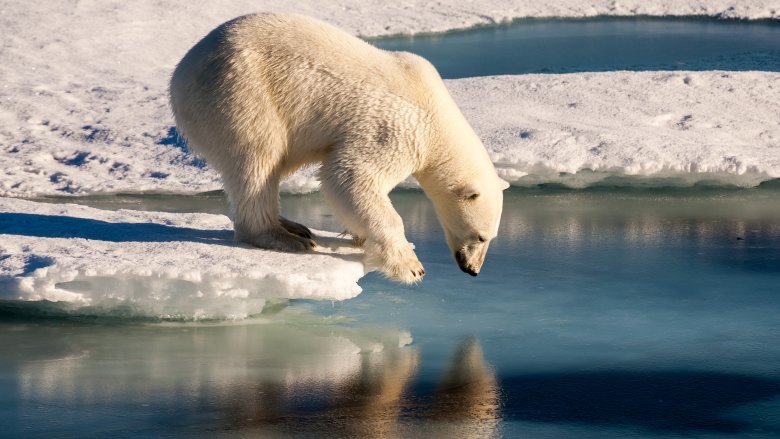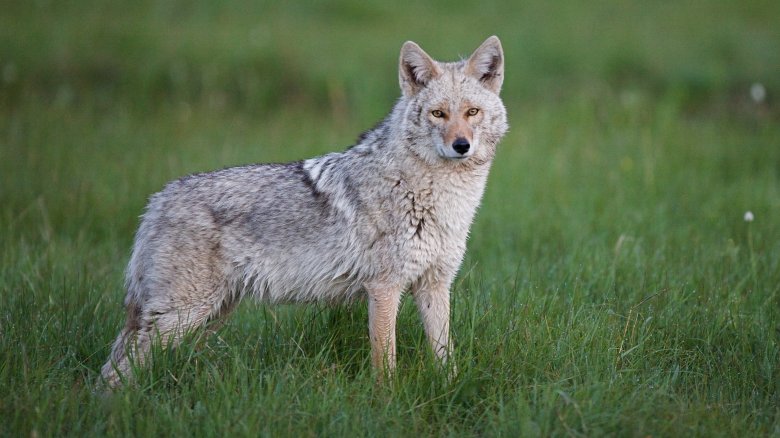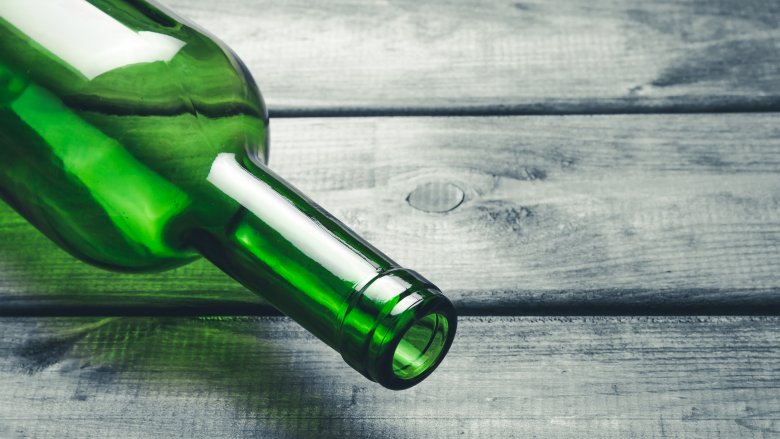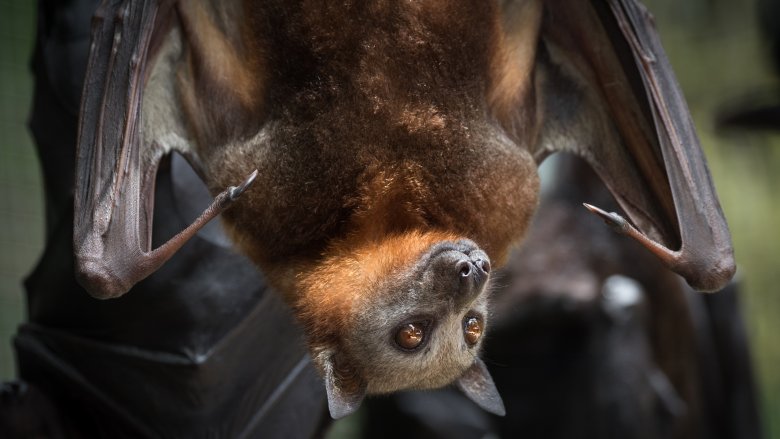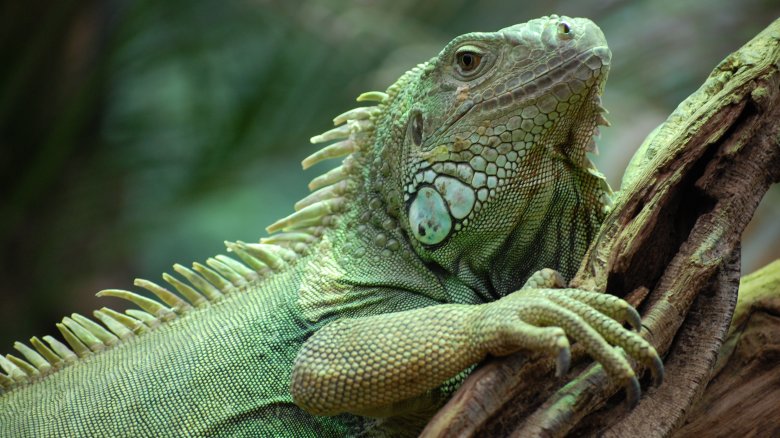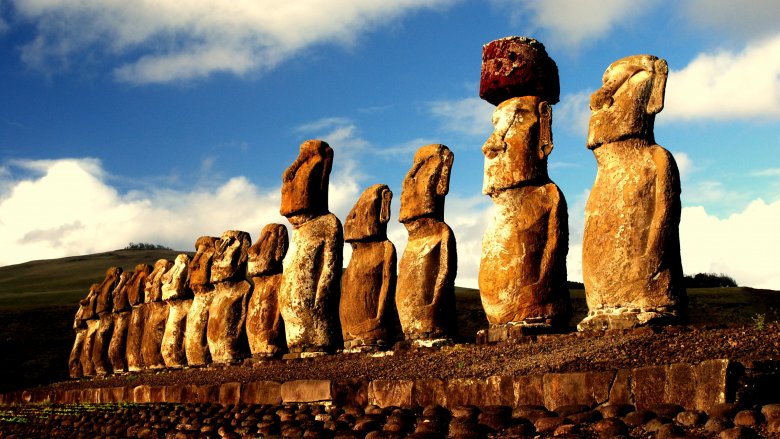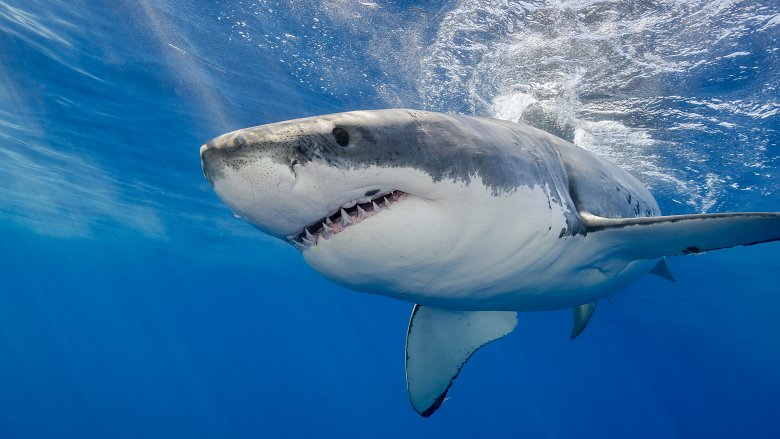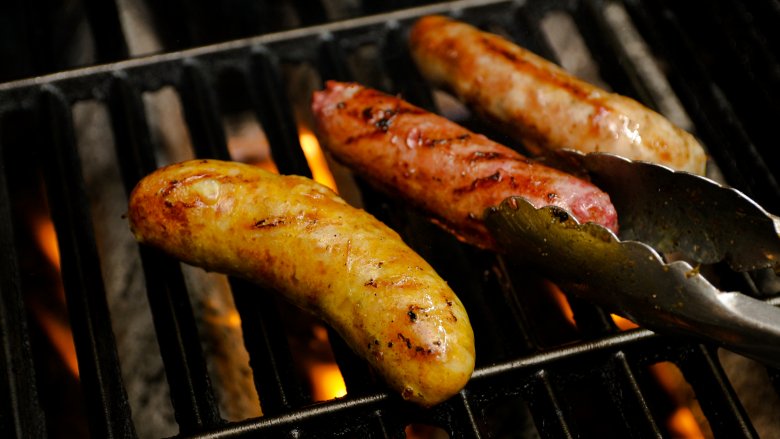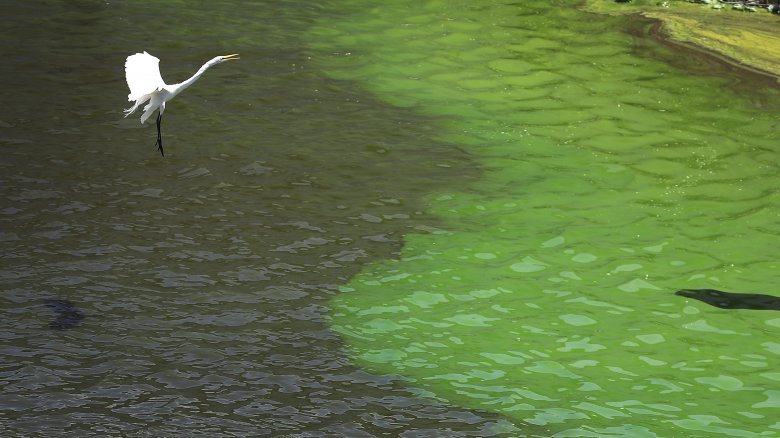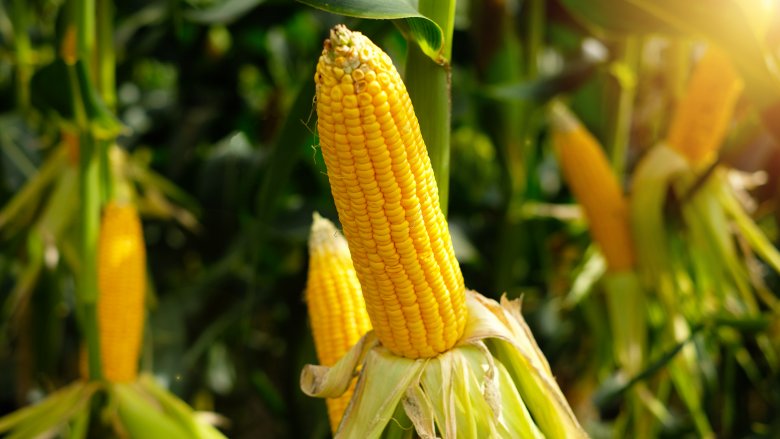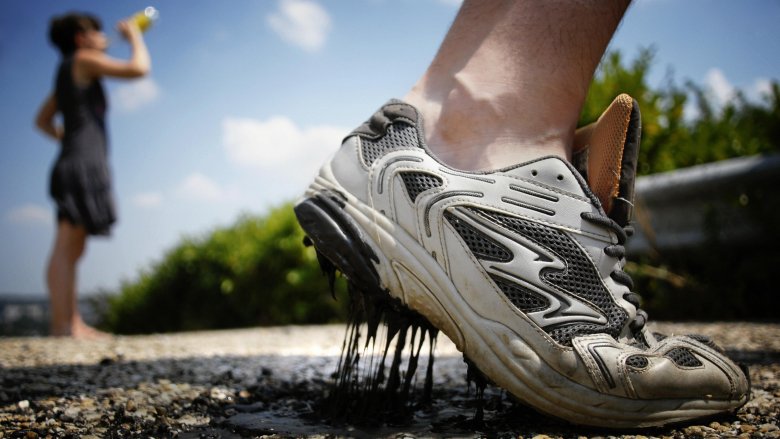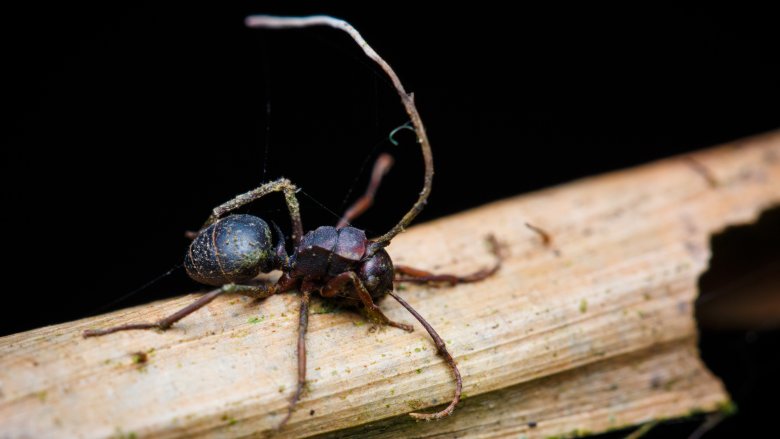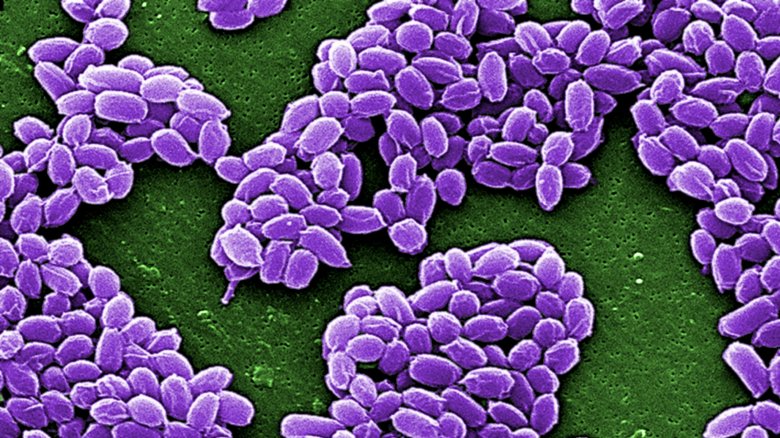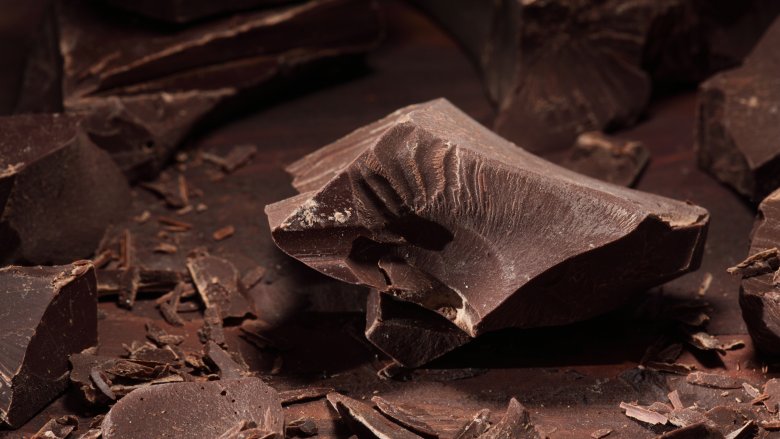Really Bizarre Climate Change Side Effects
By now everyone has heard the apocalyptic predictions: Sea level rise, killer storms, vanishing coastlines, starvation, and people in stupid-looking wigs watching teenagers kill each other on live TV over food. There's little doubt that climate change will have a catastrophic impact on the world and the way we live our lives, and the changing climate might even have something to do with whether we get to continue living at all.
But climate change isn't just going to alter our world in big ways. It's already changing our world in little ways, and some of those little changes are really, really bizarre. So for your children's sake, worry about sea level rise and famine in the not-so-distant future, but in the meantime, don't walk under a tree on a cold day in Florida because you might get hit in the head by a frozen iguana. Right — it's just that weird.
Santa Claus will have to move to London
Ask any human being over the age of 3 where the North Pole is, and the answer would almost certainly not be "England." But for future generations, it might be. According to National Geographic, glacial melt is doing more than just flooding tiny islands in the Pacific; it's also dramatically redistributing weight on the planet. As water from melting ice sheets flows into the ocean, the planet shifts on its axis toward the place where those ice sheets used to be. So since 2000, the rotational North Pole is actually drifting toward Great Britain at a rate of almost 4 inches a year. That's definitely slower than a sloth but not quite as slow as American climate policy.
Still, Santa probably doesn't have to worry about packing his bags just yet. It will be a long time before it shows up in England, but he's going to have a hard time finding warehouse space for an entire workshop and all 8 million elves in Ealing Borough. Might be a good idea to get on a waiting list, Papa Claus.
Grolar bears, coywolves, and blynxes
It's no secret that climate change will dramatically alter the landscape. As the planet warms, forests will creep north, and vegetation will grow in places like the once-frozen tundra. When that happens, species that were confined to southerly habitats will move north, too, where they will encounter similar species, and then there will be romance.
Actually, this is already happening. In New England, an up-and-comer hybrid called the Eastern coyote is thriving. According to the New York Times, Eastern coyotes (also called "coywolves") are only about two-thirds coyote — one-fourth of their lineage comes from wolves, and the rest is dog. The resulting animal is around 40 percent larger than a regular coyote, hunts in packs, and is better adapted to killing New England deer.
Hybridization is becoming more common as the planet warms. "Grolar bears" are a hybrid of polar bears and grizzlies, and there's also the blynx (bobcat plus Canadian lynx), a flying squirrel hybrid, shark hybrids, and even a cross between the Antarctic blue whale and a smaller pygmy whale. It sounds crazy, but consider this: Many humans are also hybrids. One theory is that humans left Africa and encountered Neanderthals in Europe, interbred with them, and then went on to be part of the most successful species ever. So it's too early to predict what effect climate-driven hybridization will actually have on the world we live in.
No more Two Buck Chuck
Broke wine lovers rejoiced when Two Buck Chuck first arrived at Trader Joe's, but thanks to climate change, it may become a thing of the past. According to the Wall Street Journal, global wine production in 2017 was near its lowest point 50 years, and that wasn't because workers were drinking too much on the job.
Spring frost and an abnormally hot summer were responsible for the sharp decline in European wine production. Spain's production was down 15 percent, France was down 19 percent, and Italy was down 23 percent.
So what does this mean for you, connoisseur of the Two Buck Chuck? By 2050, scientists predict global climate change will cause a two-thirds reduction in wine production in major winemaking regions. That could mean wine will become more expensive, and it could also mean that certain varieties will become extinct. Fortunately, as some regions become inhospitable to wine grapes, others will likely take over, but no one is really sure how quickly growers will be able to adapt. In the meantime, the good news is that Two Buck Chuck is a California wine, so it's probably safe ... for now.
Fruit bats falling out of trees
Bats are flying rabies factories, but they're still an important part of the ecosystem. Or so we're told. There's definitely room for skepticism because, you know, rabies. Still, even flying rabies factories don't deserve to be boiled alive, and that's exactly what's happening in some parts of the world — and it's not because sadistic humans are preparing them for dinner. These fruit bats are literally just falling out of the trees, dead.
In early January 2018 — midsummer in the southern hemisphere — a colony of fruit bats started dying in the unusually hot temperatures. Four hundred of them were found dead under the trees where they roost, but that's really nothing compared to the summer of 2014, when National Geographic says an estimated 45,000 fruit bats died from overheating. One conservationist described it as "kind of boiling in their bodies."
It's not much of a stretch to imagine that a warming climate will make incidents like this more common, unless the bats find a way to move on to cooler, southern regions, where they'll interbreed with penguins to form a new species of flying batguins. Just kidding.
Iguanas falling out of trees
And because every bizarre animal-falling-out-of-a-tree incident requires an equal and opposite bizarre animal-falling-out-of-a-tree incident, around the same time time that bats were falling out of trees in Australia, iguanas started falling out of trees in southern Florida. It wasn't the heat that was killing them, though, it was unusually cold temperatures — another side effect of climate change that's predicted to get worse in the coming years. According to the Washington Post, the U.S. East Coast had just seen one of the strongest winter storms on record, and it was having a strange if predictable effect on the local iguana population.
Reptiles are cold blooded, so if they can't draw heat from the environment they stop moving. At 40 degrees Fahrenheit, any iguanas who are hanging out in the trees will just kind of lose their grip and fall.
Unlike their flying counterparts, the falling iguanas don't always die — some Floridians suggested moving them into the sun to help them "thaw." There were a few incidents of thawed iguanas coming to life and attacking their saviors, though, which is why authorities were asking people to just leave them alone.
The Easter Bunny will have to move off Easter Island
Santa Claus lives at the North Pole, and everyone knows that the Easter Bunny lives on Easter Island. Maybe. Actually that's never been established, but whatever. Easter Bunny or no, The Canadian Broadcast Corporation recently reported that Easter Island — home of those super weird giant stone heads and other super weird dudes with rock hats on their heads — is at risk from climate-related sea-level rise.
Easter Island has some low-lying sites, and that's where many of the giant statues (called moai) are located. "There's a prediction that depending on what sea level rises do, that those [statues] could disappear in a catastrophic event, totally," said archaeologist and climate change specialist Jane Downes.
Most of the nearly 1,000 moai on Easter Island are located close to the water, which means some of them are already falling into the sea. And everyone knows Easter eggs and falling rock don't get along very well, so not only are we losing priceless historical objects, but the Easter bunny will have to find a new burrow. Shame.
A shark might eat you
The only thing that makes swimming at the beach not super terrifying is the fact that shark attacks are exceedingly rare. By some estimates, your chances of getting attacked by a shark are roughly 1 in 3.7 million, although those chances increase exponentially the more time you spend at the beach. And climate change could be altering all that anyway.
The Florida Museum of Natural History keeps annual data on shark attacks — in 2010, there were 79 unprovoked attacks worldwide, which was the highest number since 2000. By 2017, that number was up to 88.
According to Time, the surge in fatal shark attacks is related at least in part to climate change — as the oceans get warmer, sharks venture into more northerly waters. But there are also more people on the planet. And it's hotter, which means more people are vacationing on the beach and swimming in the ocean, so the sharks have more opportunities to bite simply because there are more potential victims in the water.
Enjoy your vacation.
You might never, ever, ever again enjoy a summer barbecue
Summer barbecues are a great American tradition, but climate change is going to make them a lot more unpleasant, and not just because it will be so hot outside that no one will really want to spend an afternoon standing next to a grill.
Ticks can carry Lyme disease, which is an awful, sometimes chronic illness. If that weren't bad enough, now there's a particular sort of tick that, thanks to climate change, is expanding its range from the eastern half of the United States. It's called the lone star tick, and the good news is that a bite from one won't give you Lyme disease. The bad news is lone star ticks can be fatal or can give you a red meat allergy. That's right, according to the Chicago Tribune, after you're bitten by the lone star tick, you may no longer be able to eat beef or pork.
Worse, this particular tick bite side effect is so new that no one has any idea if your allergy will be permanent, so it's possible that your summer barbecues will be limited to chicken and salmon burgers forevermore. Time to move to Canada.
Recreational waters will fill with green slime
Algae blooms are pretty typical in warm waters, but they're becoming larger, more frequent, and extra-toxic.
Algae blooms are caused by cyanobacteria, also known as blue-green algae, which is appearing in lakes and reservoirs where people swim. It's not just really horrible to look at and smell — it's also poisonous. According to NPR, the toxins in blue-green algae blooms would be a public health concern if there were just 20 micrograms per liter, but the toxins measured in some of the more recent blooms are approaching 150,000 micrograms per liter. Those toxins pose a risk for swimmers and boaters — exposure may cause nausea, vomiting, rashes, dizziness, and fever.
And it's all because of — you guessed it — climate change. "We're getting higher temperatures than we've ever seen in the past," algae expert Bev Anderson told NPR in 2016. High temperatures and drought lead to low water levels and warmer water temperatures, which are more hospitable to blue-green algae. And also to brain-eating amoebas, but we don't want to scare you.
If you can find food, it might kill you
Some of the more apocalyptic climate change predictions say there will be worldwide famine, which should be terrifying enough, but there's also the distinct possibility that in the midst of rebel uprisings against Savemart and all of us supplementing our diets with canned dog food, many of our remaining crops will actually become toxic. According to a United Nations report, staple crops like wheat and corn are actually producing toxins as a defense mechanism against the extreme heat. Those toxins can cause neurological disorders, and long-term consumption may lead to cancer.
Here's how the science works: In dry weather, plants hang onto the nitrates they would otherwise be using to produce proteins and amino acids. When humans eat nitrates, they interfere with the blood's ability to move oxygen around in the body. On the other hand, when extremely wet weather happens, plants accumulate hydrogen cyanide, which is exactly as terrifying as it sounds. High concentrations of hydrogen cyanide will kill you in a couple minutes. But don't worry, there's always canned dog food.
The pavement will no longer fry eggs because it will literally melt
How many times have you heard your grandpa say the words, "It's so hot out there you could fry an egg on the pavement?" It's been a cliche for a long time, but it doesn't really work. But relax! The day may soon arrive when you won't have to worry about frying eggs on pavement because the pavement will literally be melting. And then, you know, you'll get hot melted tar in your fried egg and it won't taste very nice.
There are places where this is already happening. According to National Geographic , on a particularly hot day in Victoria, Australia — the same heatwave that took out hundreds of bats — drivers were tweeting photos of asphalt that was literally melting in the 100+ degree temperatures. But wait, there's more. If the asphalt can't handle 100 degrees of heat, what's going to happen in 2040 when high temperatures Down Under are expected to reach 120+ degrees? Maybe people can boat from place to place on liquid asphalt. Awesome.
Zombie ants will become more insidious
So far no one is predicting an actual zombie apocalypse once global climate change really starts wreaking havoc on the world. Yes, that's disappointing, but it's early days yet. What they are predicting is that the fungus that creates little miniature zombies will become more insidious.
According to Wired, a species of fungus called Ophiocordyceps basically infiltrates ant colonies and turns them all into zombies. The zombie ants then do the bidding of the fungus. The army of zombie ants leave the ant hill, stagger to the top of whatever tree happens to be just above the colony where all their non-zombie pals live, bite down on the veins of some leaves, and then die horribly as fungus stalks grow out of their heads. The stalks then drop spores onto the colony, thus repeating the whole horror movie scenario over and over again.
So what does climate change have to do with all this? Some versions of this fungus, which live in places where the trees drop their leaves in the fall, have evolved to make the ants bite down on twigs instead of leaves. Scientists think this adaptation evolved during climate change episodes of the past, which means new adaptations could evolve as our climate changes again. Who knows what the future holds for this inventive little fungus.
Ancient bacteria will rise from their frozen graves
Since we're on the topic of zombies, climate change may also lead to undead microbes rising from their graves and killing us.
According to the BBC, in August 2016, 20 people in Siberia were hospitalized with anthrax. Scientists think the anthrax came from a frozen reindeer carcass that had been buried in the permafrost for 75 years. When the permafrost melted during an unseasonably warm summer, it released the reindeer and its microscopic passengers. The anthrax infected living reindeer, and the living reindeer infected people.
And that's just an example of what can happen with 75-year-old microbes. Microbes that have been frozen for hundreds or thousands of years are much, much more terrifying. Ancient bacteria and viruses are capable of killing a lot of people very quickly, simply because modern humans have no natural immunity to stuff that was common hundreds or thousands of years ago.
The permafrost is really good at keeping those microbes in pristine condition, so as it melts it could unleash a whole plethora of awful diseases into the world, including the Spanish flu, which wiped out millions of people in 1918. Fragments of that virus have been found in corpses buried in Alaska, and there is probably bubonic plague and smallpox buried somewhere in the frozen ground of Siberia. Maybe get your medical grade respirators now because there's going to be a run on them. You've been warned.
Worst of all? The possible extinction of chocolate
All this horror pales in comparison to the real threat to humanity — the pending extinction of chocolate. So in a way, all the zombies, sharks, toxic food, and waters full of green sludge don't really matter.
According to Business Insider, chocolate could be gone by 2057. Cacao, the plant used to make chocolate, only grows in a very narrow strip of land just 20 degrees north and 20 degrees south of the equator. But thanks to climate change, unseasonably dry, warm temperatures in that part of the world could end the whole industry.
Fortunately, Mars — the company that makes Snickers and lots of other chocolate things — is pledging a ton of money to the development of a genetically altered cacao plant, one that can withstand the heat and dry conditions. Sure, other climate-related issues are important, but dear scientists, let's put this one on the top of the list, okay?
